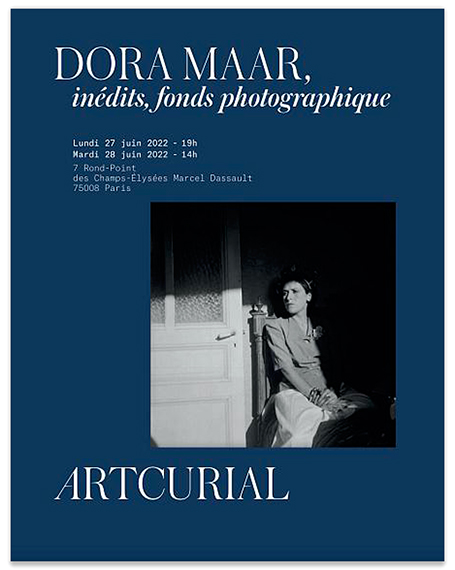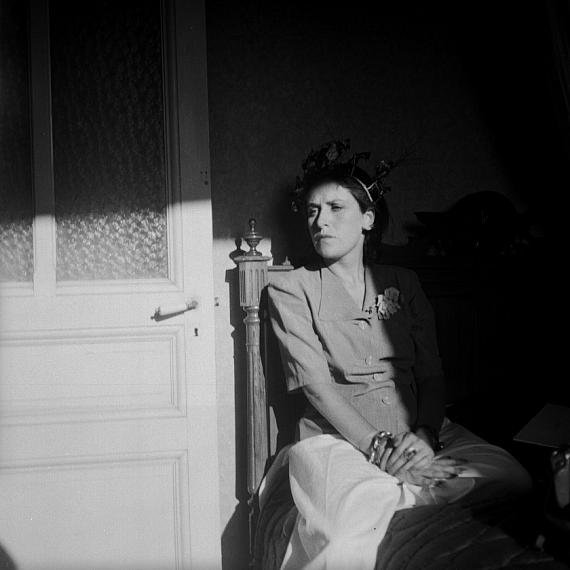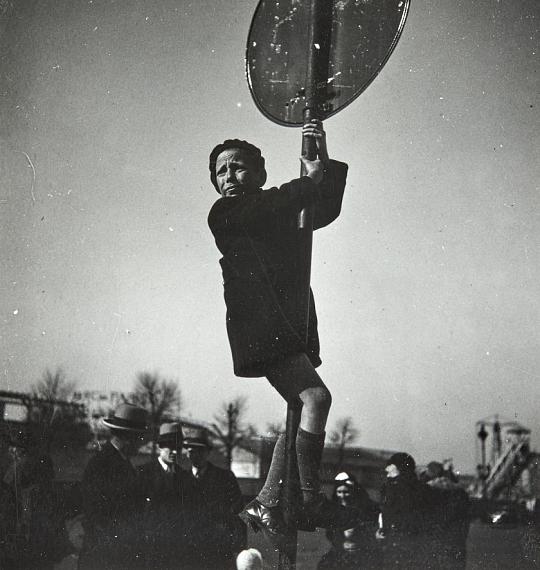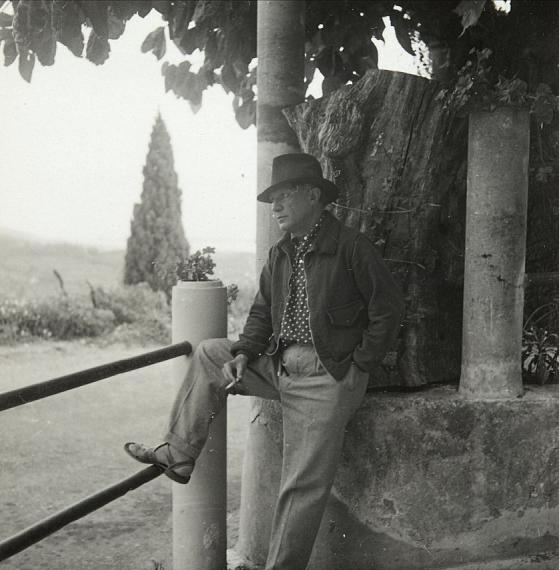
Dora Maar »
Dora Maar
Unpublished, photographic collection
Auction: – 28 Jun 2022
Mon 27 Jun 18:00

Artcurial
7, Rond-Point des Champs-Elysées
75008 Paris
+33(0)1-42992020
contact@artcurial.com
www.artcurial.com/
Mon-Fri 11-19, Sat 11-18, Sun 14-18

Dora MAAR (1907 - 1997)
Dora Maar portant une couronne
de fleurs - Antibes, August 1939
Negative: 6 × 6 cm, Modern print: 40 × 30 cm
Estimate: €1,500 - 2,000
DORA MAAR
Unpublished, photographic collection
Auction:
Monday, 27 June, 2022, 7pm
Tuesday, 28 June, 2022, 2pm
Exhibition:
22 June, 11am - 6pm
23 June, 11am - 6pm
24 June, 11am - 6pm
25 June, 11am - 6pm
Online catalogue: here
Contact:
Elodie Landais
Phone +33 1 42 99 20 84
elandais@artcurial.com
On June 27 and 28, Artcurial will pay tribute to the photographic work of Dora Maar through 750 unpublished and intimate photographs.
Gathered in 356 lots, these photographs illustrate the artist’s years with Pablo Picasso, reflecting her strong taste for surrealism and the avant-garde, but also for portraits and street scenes with a social character.
Through this exceptional photographic treasure from the estate of Dora Maar and exhibited to the public for the very first ffirst time, the artist appears as one of the most original photographers of her time, a true pioneer of the mid-20th century.

Dora MAAR (1907 - 1997)
Guernica en cours de réalisation
dans l'atelier de la rue des Grands
Augustins - Paris, May-June 1937
Vintage gelatin silver print: 5,70 × 5,50 cm Negative: 6 × 6 cm, Modern print: 40 × 30 cm
Estimate:€2,500 - 3,500
Dora Maar (1907 – 1997)
Henriette Theodora Markovitch was born in 1907 in Paris but grew up in Buenos Aires. At the end of the 1920s she returned to the French capital to study art and photography. It was at this period that she took on the pseudonym Dora Maar. She studied at the Union Centrales des Arts Decoratifs, the École de Photographie, the Académie Julian and the École des Beaux-Arts.
It was in André Lhote’s studio that she became involved with the surrealist movement. She met Henri Cartier-Bresson, Emmanuel Sougez and Brassaï there, and became a close friend of André Breton. Becoming a prominent figure in avant-garde artistic circles, she enjoyed great success with her surrealist peers and took part in several exhibitions as part of the movement.
In the mid 1930s, at the brasserie des Deux Magots in the heart of Saint-Germain- des-Prés, Paul Éluard introduced her to Pablo Picasso. In fact, they had already met during the filming of Jean Renoir’s Crime de Monsieur Lange. She became his muse. From the start of the Spanish civil war to the end of the Second World War, they remained close and influenced each other’s work. Picasso never stopped painting the one he called La femme qui pleure (The Weeping Woman).
Her work has been exhibited all over the world : Paris, New York, Barcelona, Chicago...
Settling in the Luberon, she devoted more time to painting, reserving the pieces she created for her inner circle. 1997 marked the end of the life of a woman who documented the various upheavals of the 20th century as she passed through it.

Dora MAAR (1907 - 1997)
Enfants sur un panneau de signalisation, c. 1935
Vintage gelatin silver print: 5,60 × 5,30 cm
Negative: 6 × 6 cm
Modern print: 40 × 30 cm
Estimate:€1,500 - 2,000

Dora MAAR (1907 - 1997)
Buste en plâtre de Dora Maar dans l’atelier de la rue des Grands Augustins - Paris, 1941
Six vintage gelatin silver prints: 6 × 6,50 cm
Negatives (8): 6 × 6 cm, Modern print (5): 40 × 30 cm
Estimate: €4,000 - 6,000

Dora MAAR (1907 - 1997)
Pablo Picasso à la rambarde - Hôtel Vaste Horizon, Mougins, été 1937
Vintage gelatin silver prints: 5,50 × 5,40 cm
Negative: 6 × 6 cm, Modern print: 40 × 30 cm
Estimate: €2,500 - 3,500